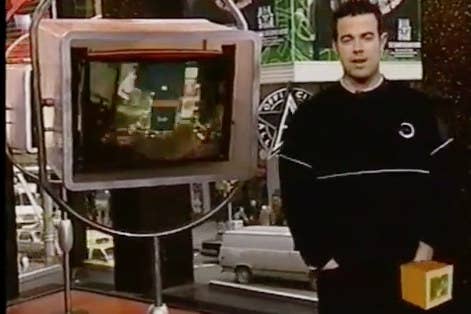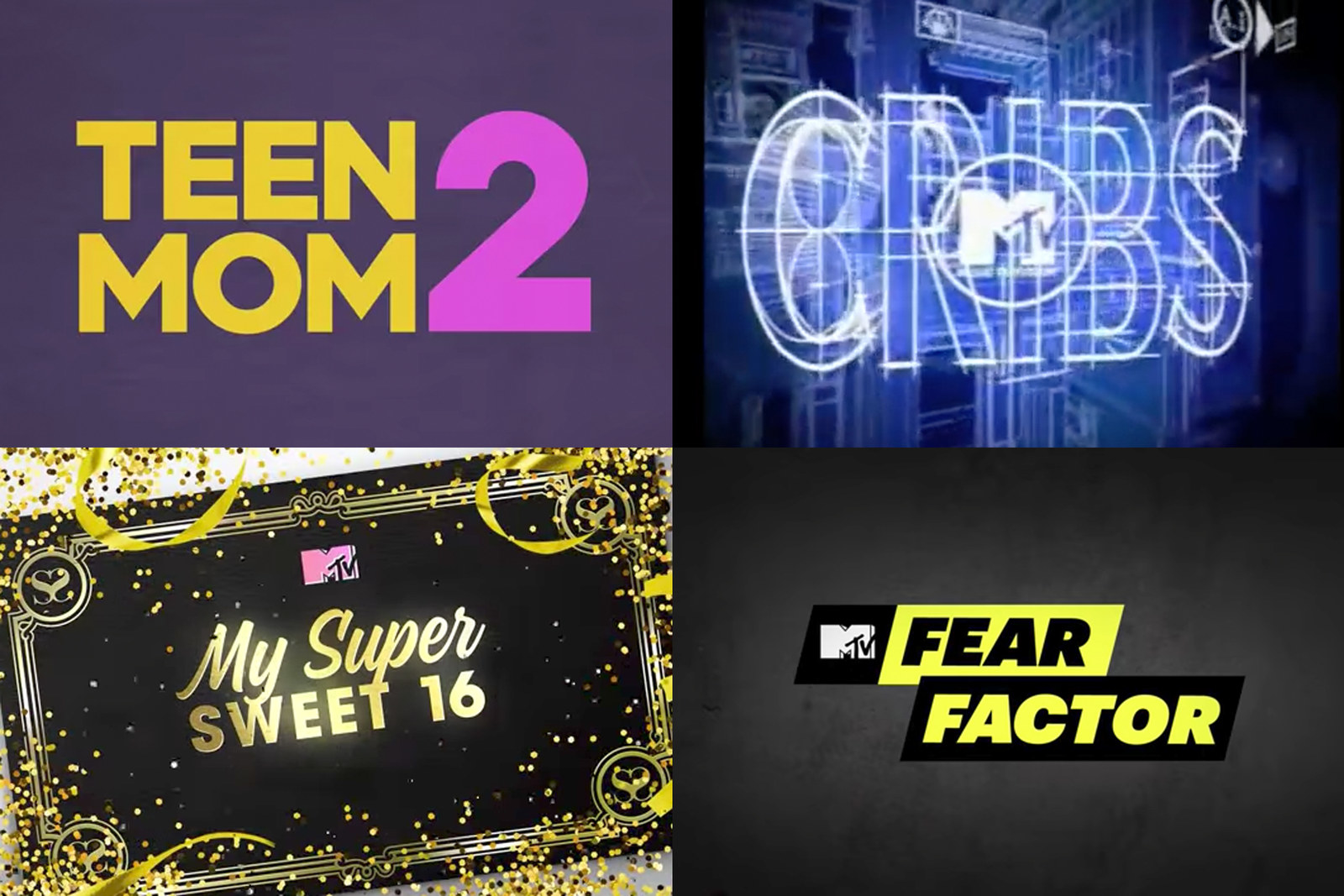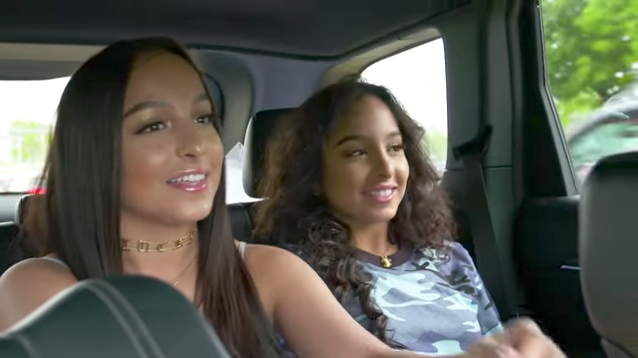Every few years, like clockwork, there’s big talk about whether MTV is dead, too far gone from relevancy to return. After Jersey Shore went off the air and the network’s ratings dipped in 2015, Billboard wrote about how “the channel lacks a breakout hit that defines its sensibility” and the New York Times called Viacom, MTV’s parent company, the “vanguard of yesteryear.” Bernstein analyst Todd Juenger suggested that Viacom was the next Kodak, sure to fold because its young audience isn’t interested in linear TV. “MTV is at death’s door,” wrote the New York Post. After each wave of success for MTV comes an inevitable lull, and nearly each time, audience and critics alike wonder if the network can do it again.
“I’d say that the difference between then and now is MTV might be really dead,” Rob Tannenbaum, co-author of I Want My MTV, the story of the network’s golden age in the 1980s and ’90s, tells BuzzFeed News. “Or at the very least, this is the longest stretch of time anyone has had cause to say MTV is dead.”
In late June, less than two years after hiring a high-profile team of editors and writers to venture into longform journalism, MTV laid off those hires and is restructuring its online news division once again. The cultural criticism and reporting that MTV News produced was well-regarded, at least by other writers, but MTV management decided to change direction, telling Billboard, “We’re doubling down on where we’ve seen our biggest successes in youth culture, music and entertainment.” With the end of this iteration of MTV News came MTV’s new slant: shortform video content for younger viewers.
The layoffs and push to short videos come after months of changes for the company. Last summer, Lauren Dolgen, MTV’s former head of reality TV who created international hits like Teen Mom and 16 and Pregnant, left the company after 19 years. Her position wasn’t replaced. Last October, Chris McCarthy took over as president of MTV (in addition to Logo TV and VH1), saying “the youth culture brand, and the opportunity to reinvent [MTV] is like no other.”

But on the programming side, MTV executives seem more motivated by nostalgia than leading the network into the future, reviving old unscripted standbys like My Super Sweet 16 and Cribs (on Snapchat). They’re also paring back their scripted programs, canceling acclaimed shows like Sweet/Vicious and possibly sending the half-hour comedy Loosely Exactly Nicole to Facebook for its second season. Viewership for the 2016 MTV Video Music Awards dropped 34% from the year before, although that was counterbalanced by a 70% increase in online streams, and the network is still finding ratings success among teenagers with shows like Fear Factor (MTV’s highest-rated premiere in two years) and Promposal.
So judging by some of the network’s ratings and certainly by its streaming numbers, MTV is not yet dying. But even if rumors of the network’s demise are exaggerated, the company might just be in the midst of an identity crisis. MTV hasn’t had a big, topic-of-conversation hit in years — not on TV, not in terms of artist access, and certainly not online. None of its shows are the cultural touchpoints they were a decade ago, or 20 years ago, or even 30 years ago.
The challenge facing MTV now is different than the ones the network has dealt with in eras past. They’re not necessarily competing with other networks for the attention of the elusive 16-to-24 market; they’re competing with the internet, and content on the internet is mostly free, on-demand, and increasingly created by the very young people the network is trying to court. MTV used to be closely in tune with what youth culture wanted, and they were adept at leading the conversation around it. Now, it looks like they’re just trying to catch up.
"MTV has always been a platform for failure."
“This is the defining problem for MTV,” Tannenbaum says. “Because youth culture turns over at such a rapid pace, they have to always be changing.” Tannenbaum suggests that MTV’s high programming turnover isn’t necessarily a symptom of a network struggling, but rather one constantly forced to “revamp the program,” even when it’s ostensibly working.
Past digital ventures like MTV Hive (for indie music) and MTV Iggy (an online hub for global music) were ultimately short-lived, and the network is happy to turn the faucet off for TV shows that aren’t working. (Would you believe that There & Back, a reality show documenting O-Town’s Ashley Parker Angel attempting a solo career, only got one season?) “MTV has always been a platform for failure,” Tannenbaum says. “I don’t mean that everything fails, because they’ve had an enviable number of successes, but when they fail, they just move on.”

MTV recently canceled three of its scripted shows after only one season each. Original series like Faking It, Eye Candy, Happyland, and Finding Carter have all been canceled since 2014. Fear Factor’s premiere ratings this year were great — nearly a million total viewers, with strong viewership among the 18-to-34 set — but that pales in comparison to the network’s past juggernauts. Jersey Shore’s Season 3 premiere, for instance, had 8.4 million viewers.
MTV’s president, Chris McCarthy, seems to be banking on previously successful unscripted content as he tries to reestablish the brand. Earlier this month, another Teen Mom offshoot premiered: Teen Mum, with the same premise but based in the UK. (Teen Mom OG and Teen Mom 2 — they even added a new mom! — are still on the air, and the network is still producing reunion specials, never-before-seen-footage episodes, and online-exclusive content.) This week, the network announced its summer reality slate, including a lot of familiar themes: Siesta Key, a docudrama made by the producers of Laguna Beach, follows hot, white, rich teens in Florida, and premieres on July 31. Catfish is spinning off into Catfish: Trolls, wherein participants confront their online aggressors instead of their online romances. In recent months, MTV has also revived old faithfuls like Fear Factor, My Super Sweet 16 and Cribs.
“The goal is to pull in new audiences,” Amy Doyle, executive vice president and general manager of MTV, Logo, and VH1, tells BuzzFeed News. “The audience that maybe years ago watched The Hills would see Siesta Key and draw probably a comparison to that. To the new audience, it’s going to be fresh and new and they don’t have the context of The Hills from years past.”
MTV’s bread and butter has long been a mix of music videos, talk shows, awards shows, live shows, stripped-down live shows, docudramas, and competitive reality shows. Right now, however, it doesn’t seem to have one central signature franchise that’s still functioning as a highly profitable business for them, never mind a cultural force that people can’t stop talking about.
“Every media company right now is having a struggle. Everybody’s panicked. With MTV, it’s more acute."
“Every media company right now is having a struggle. Everybody’s panicked,” music writer Maura Johnston tells BuzzFeed News. “With MTV, it’s more acute. It represents youth, it represents a time in your life where you’re figuring yourself out, it represents the time of your life where you’re taking chances and taking risks. Corporate media is extremely risk-averse.” Even more reason why they’re focusing more on bringing back old hits than generating new ones.
Doyle says that they’re hoping to get at a new audience with returning shows, but MTV executives also seem cognizant of the nostalgia factor. “Fear Factor is that perfect blend of, here’s a show we know is popular at one time, and still has a very obsessive following,” Doyle says. “By bringing in Ludacris, who is an iconic hip-hop artist who has been a staple on MTV for the last 10, 15 years, and is still relevant, obviously, because he’s still a movie star and part of one of the biggest global movie franchises, it felt very fresh and relevant and diverse.”
Doyle says that shows like Fear Factor, My Super Sweet 16, Promposal, and the “reinvention” of the movie and TV awards have brought more teens to the network. “Those are really hitting the sweet spot of that teen demographic, and then some of our scripted and our unscripted brings in a little bit of an older audience,” she says. This is not exactly a concrete manifesto for MTV’s strategy going forward, but maybe they’re hoping to see more of this younger audience tune in to the shortform digital videos they’re investing in.
Doyle pointed to MTV Decoded with Franchesca Ramsey, hosted on the MTV News YouTube channel — which only has around 98,000 subscribers — as one example of what they’re hoping to do more of. Ramsey’s videos are usually under five minutes, highly structured and plotted out, and usually a thoughtful exploration of things like race and gender and power structures. MTV is also reviving old shows through its digital social properties: The Cribs redux is now on Snapchat Discover, and MTV has partnered with Musical.ly to produce a truncated version of Wild 'N Out.
But it’s not entirely clear how MTV will direct viewers of its digital content to its broadcast programming, especially 16-year-olds who might not have cable packages. “We consider ourselves more than just a TV network, so the metrics we use are all-encompassing,” Doyle says. “From traditional linear ratings to our cultural impact, including across our social media and digital metrics, we look at it all in aggregate.”
In aggregate, it looks like MTV is doing the thing it does best: throwing spaghetti at a wall (or at a 16-year-old’s smartphone) until something sticks. But it’s hard to know where it should even be aiming the content it produces, once it figures out what that content should be.

At this point, MTV is old — an entire generation has never heard of Daria — and its audience’s preferred platforms have changed. “In 1981, MTV wasn’t really competing with video games, they certainly weren’t competing with YouTube, the internet, iPads, iPhones, Snapchat,” Tannenbaum says. “MTV isn’t competing against VH1 or Comedy Central, they’re competing against Silicon Valley. How do you beat Silicon Valley?”
Vloggers might be MTV’s greatest competition when it comes to short content, the very stuff it's looking to do more of. YouTubers are young and increasingly savvy; vloggers like Gigi Gorgeous, Tyler Oakley (who has frequently appeared on MTV), and PewDiePie are creating their own cottage industries without the necessity of a network funneling them to an audience. YouTubers make teen-friendly content that speaks on their level without the barriers of shelling out for an expensive cable package or paying attention for longer than 12 minutes. The last MTV Video Music Awards show pulled in 6.5 million viewers; a recent Jenna Marbles video, titled “Cutting and Coloring My Own Hair,” has almost 5.5 million views. This isn’t a perfect comparison — views and viewers aren’t equivalent — but it does demonstrate the volume of buzz and audience that vloggers can generate without a network backing them up (or controlling their creative decisions).

At least some people at MTV seem to have noticed that YouTube is the next frontier: In this season of My Super Sweet 16, most of the subjects thus far have been internet-famous 15-year-olds. (The latest episode features the SiAngie Twins, two teenage girls with 1.6 million Instagram followers. Did Fat Joe follow through and perform at their party instead of going to his own daughter’s birthday? Do any of the teenagers watching their episode of My Super Sweet 16 know who Fat Joe is?) This season’s episodes are a far cry from the show’s first incarnation, which launched in 2005. Where the original Super Sweet 16 was happy to make fun of privileged teenage girls crying over how they got a Range Rover instead of a Lexus, now the episodes are more like advertisements for these teens as vloggers or dancers or singers or entertainers. They’re spoiled, sure, and maybe a little unreasonable, but you still leave feeling like you’ve been told to like — and follow — them. MTV’s decision to court vloggers is “audience led,” says Doyle. “We’re able to follow the huge followings that social media talent, YouTube talent has, and we know that they are superstars. Some of them are more popular than Taylor Swift. We can’t ignore that.”
MTV bringing vloggers onto their network seems like a symbiotic solution: MTV gets some youth credibility by finding self-made famous teenagers, and vloggers get a boost of publicity through a traditional media channel. But after 30 years, MTV is now the establishment instead of the counterculture. Instead of bringing new talent to the network and turning them into real celebrities — your Snookis, your Carson Dalys — they’re left chasing after existing internet commodities with the hope that some of their teen legitimacy will rub off on the network.
"MTV isn't competing against VH1 or Comedy Central, they're competing against Silicon Valley. How do you beat Silicon Valley?"
There are some indications that MTV is still trying to create culture — or at least respond to it in real time — rather than chase it. Just last week was the premiere of the new show SafeWord, in which celebrities (along with comedians) set out to play daring games with the goal of humiliating each other. In May, the Daily Beast, In Touch, the Daily Mail, and other outlets reported on Amber Rose apparently claiming in a tweet to be the “Becky With the Short Hair” referenced in Beyoncé's Lemonade. In reality, Rose’s tweet was just a part of the show, but no one knew that until the promo for SafeWord was released, and very few people actually cared by that point. A chance for MTV to not only create but control buzz around a viral Celebrity Moment is now just another example of how broadcast television featuring famous people can’t keep up with how fast the internet moves.
This is maybe where the definition of success gets more complicated for MTV, and for television networks at large. Ratings still matter, but so does social media chatter, or how dominant your products are in a culture where talking about something is almost as important as watching something.
And it seems like the network is struggling to recapture the thing that made it powerful in the first place: cultural relevancy with a young, ever-rotating audience. Say what you will about Jersey Shore: It wasn’t prestige television, but everyone was talking about it for nearly a decade. A show like Teen Mom, though it's a consistent ratings success and easy tabloid fodder, doesn’t control the cultural conversation in the same way. And even if MTV is bringing in younger celebrities to the VMAs, and even if people are watching the awards show online, it hasn’t produced an endlessly-talked-about moment since, arguably, 2013, when Miley Cyrus twerked on Robin “Sad Beetlejuice” Thicke.
It’s impossible to predict what will or won’t hit in the future, and it might take just one cultural juggernaut for MTV to lead the conversation yet again. It is, however, unlikely that a British iteration of the Teen Mom franchise will be that big flashpoint. Whether it’s a viral video, a reality show, or a VMA moment turned meme, it’s going to take something new for MTV to regain control of the cultural conversation instead of merely chasing after it. ●
